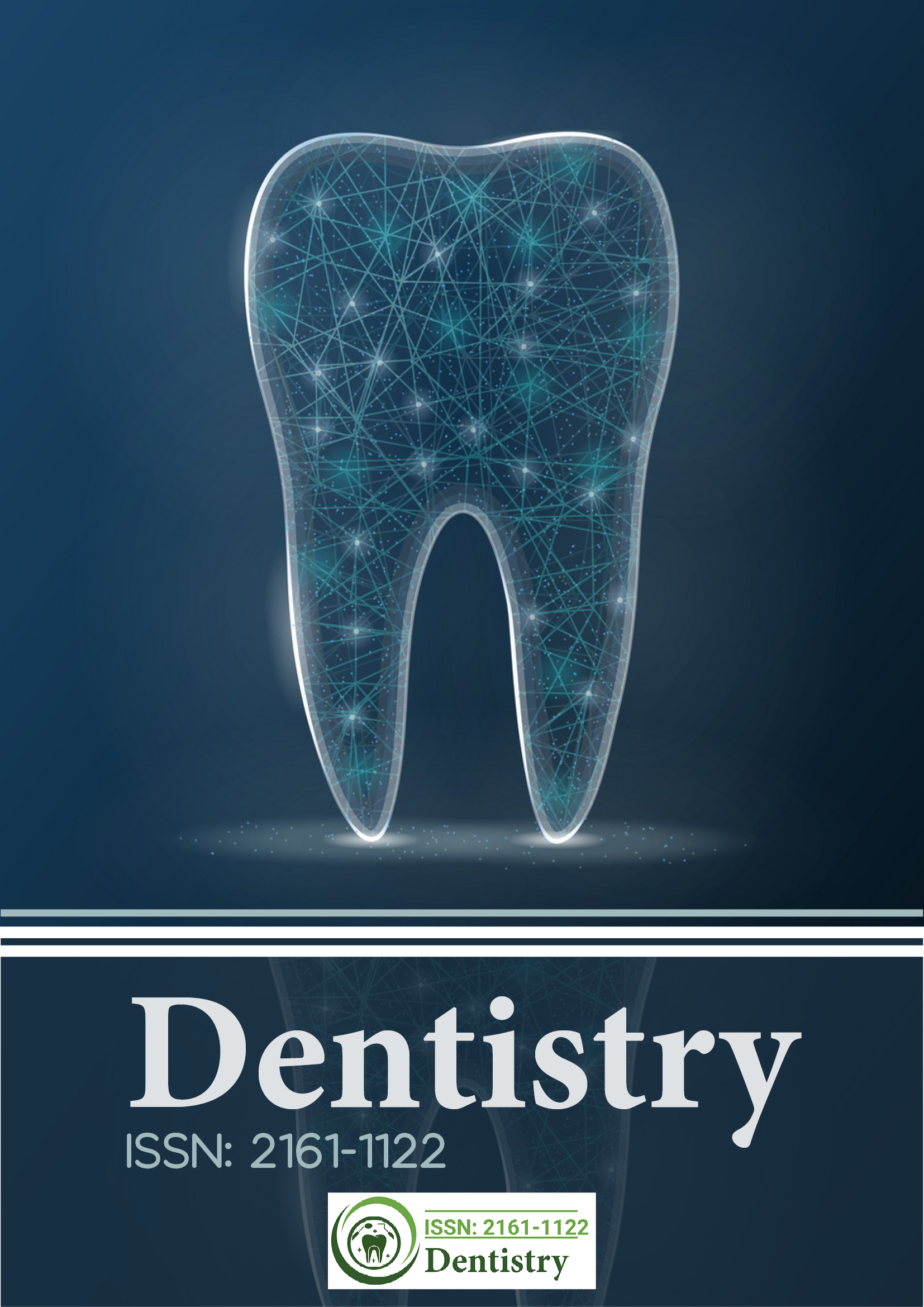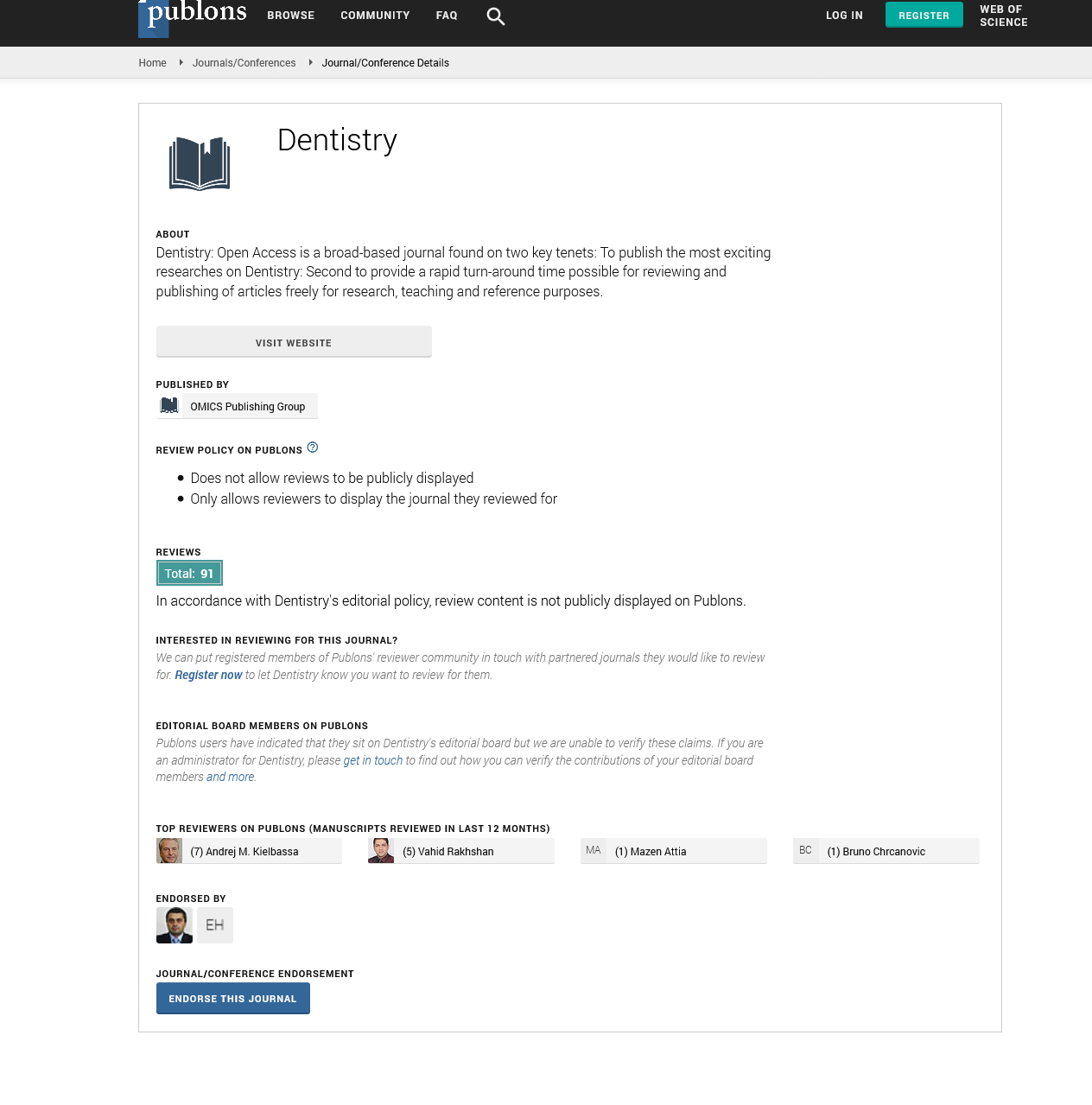Citations : 2345
Dentistry received 2345 citations as per Google Scholar report
Indexed In
- Genamics JournalSeek
- JournalTOCs
- CiteFactor
- Ulrich's Periodicals Directory
- RefSeek
- Hamdard University
- EBSCO A-Z
- Directory of Abstract Indexing for Journals
- OCLC- WorldCat
- Publons
- Geneva Foundation for Medical Education and Research
- Euro Pub
- Google Scholar
Useful Links
Share This Page
Journal Flyer

Open Access Journals
- Agri and Aquaculture
- Biochemistry
- Bioinformatics & Systems Biology
- Business & Management
- Chemistry
- Clinical Sciences
- Engineering
- Food & Nutrition
- General Science
- Genetics & Molecular Biology
- Immunology & Microbiology
- Medical Sciences
- Neuroscience & Psychology
- Nursing & Health Care
- Pharmaceutical Sciences
Oral squamous cell carcinoma, the HPV connection
23rd International Conference on Dentistry and Dental Materials
July 19-20, 2018 | Rome, Italy
Joharia Azhar
Princess Nourah Bint Abdul Rahman University, KSA
Posters & Accepted Abstracts: Dentistry
Abstract:
Oral cancer is the second most common cancer in most Asian countries and is the second leading cause of cancer associated deaths. Since the disease is usually diagnosed in the later stages of cancer progression, the five year post treatment survival rate is dismal. Human Papilloma virus has already been implicated in the etiology of cervical cancer, and strong evidence suggests its close association with the oral cancer. In the case of the HPV associated cancers the response of the body to virally infected cells modifies the outcome of cancer at cellular/molecular as well as clinical levels. INFγ (Interferongamma) is the only member of type II class of interferon that plays critical roles in both innate and adaptive immune as well as tumour immune responses, exerts anti-proliferative effect on various cancer cells and is also administered as an integral part of the cancer chemotherapy. Recently a single nucleotide polymorphism was discovered at its proximal promoter at the position -179 representing a G to T transition, which appears to impart resistence to HPV induced carcinogenesis. The only way to control this menace is early diagnosis and prevention. Cancer prevention includes primary and secondary prevention methods. Primary prevention refers to avoiding cancer-causing substances in the environment or dietary elements associated with increased risk. Secondary prevention aims at early detection and treatment of identified premalignant and malignant lesions. Prevention is possible only with advanced screening methods. An overview of these methods will be given, salivary proteomics and molecular markers having diagnostic and prognostic value will be discussed.

